Overview of Industrial Insulation

I. Introduction to Industrial Insulation
- Overview of the insulation industry
- History and evolution of insulation materials
- Importance of insulation in industrial applications
II. Types of Industrial Insulation and Applications
- Mechanical insulation
- Cryogenic insulation
- Thermal insulation
III. Insulation Material & its Properties
- Cellular Insulation
- Fibrous Insulation
- Granular Insulation
IV. Insulation Forms and Applications
- Blanket insulation
- Board insulation
- Spray foam insulation
- Liquid insulation
- Pipe Cover insulation
V. Differences Between Hot and Cold Insulation Materials
- Selection of insulation materials based on temperature requirements
- Understanding thermal conductivity and thermal resistance
- Thermal bridging and its impact on insulation performance
VI. Principles of Insulation
- How insulation works to reduce heat transfer
- The role of insulation in energy efficiency and sustainability
- Common insulation challenges and how to overcome them
VII. Benefits of Insulation
- Economic benefits of insulation in reducing energy costs
- Health and safety benefits of insulation in protecting personnel and equipment
- Environmental benefits of insulation in reducing the carbon footprint

Introduction to the Insulation Industry
Industrial insulation is a critical component of the industrial sector, providing thermal and acoustic insulation solutions for various applications. The insulation industry has been growing in recent years, driven by increasing demand for energy-efficient and sustainable insulation solutions. Professionals working in the insulation industry must understand the industry’s landscape, trends, and challenges to provide effective and efficient insulation solutions. This includes knowledge of the different types of insulation, such as mechanical, cryogenic, and thermal insulation, and the various insulation materials, such as cellular, fibrous, and granular insulation. By understanding the fundamentals of industrial insulation, professionals can make informed decisions on the job, leading to improved work performance and career growth opportunities in the insulation industry.
This lesson will give you an overview of the insulation industry, including how and why insulation is used and safety factors related to insulation.
Types of Industrial Insulation and Applications
What is insulation?
Pipe industrial insulation is the process of applying insulating materials to the external surface of pipes used in industrial applications. The primary purpose of pipe insulation is to reduce heat transfer and prevent energy loss, improve process efficiency, and maintain a stable temperature in the pipe system.
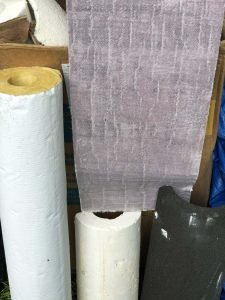
What is the difference between Cryogenic Insulation and Thermal Insulation?
Cryogenic insulation for pipes is a type of insulation material designed to provide thermal protection for pipes that handle cryogenic fluids, such as liquid nitrogen, liquid oxygen, or liquefied natural gas (LNG). Cryogenic fluids are typically stored and transported at extremely low temperatures, and they require specialized insulation to prevent heat gain or loss and maintain their low temperatures.
Thermal pipe insulation is a type of insulation material used to prevent heat transfer from hot or cold fluids in pipes, providing a barrier to minimize temperature changes in the pipe system. It is typically applied to the external surface of pipes and vessels to reduce heat loss, maintain a stable temperature, and protect personnel and equipment from high-temperature surfaces.
Thermal insulation materials can be made of various materials, including fiberglass, mineral wool, foam glass, calcium silicate, and aerogel. The insulation materials can be applied in different forms, including pre-formed sections, flexible wraps, or spray-on. The choice of insulation material and form depends on the application, temperature requirements, and installation conditions.
Proper installation of thermal insulation is critical to its performance and requires attention to detail in the selection of the material and the installation method to ensure a tight, continuous seal around the pipe or vessel. Properly installed thermal insulation can reduce energy costs, increase process efficiency, and extend equipment life.
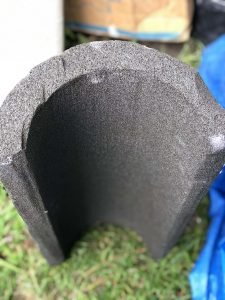
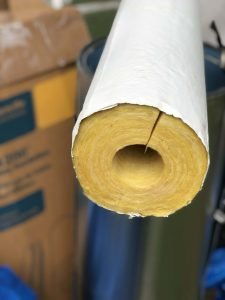
Insulation type
As an expert instructor in industrial insulation, it is important to understand the various types of insulation materials available for industrial applications. Generally, insulation materials can be divided into three main types: cellular, fibrous, and granular.
Cellular insulation is made up of individual cells isolated from one another, with the cell material often being glass or plastic. Materials such as polyurethane, polystyrene, polyisocyanurate, or elastomeric are commonly used to create cellular insulation.
Fibrous insulation is composed of small-width fibers that finely separate the air space. Materials such as silica, slag wool, rock wool, and alumina-silica fibers are often used, with mineral wool and glass fiber being widely utilized types of this insulation. The fibers in these products are bonded together with organic binders to provide limited structural integrity.
Granular insulation is composed of small nodules that contain hollow spaces. This type of insulation material can be produced as loose material or combined with a binder and fibers to make rigid insulation. Common materials used for granular insulation include diatomaceous earth, calcium silicate, extended vermiculite, cellulose, perlite, or microporous protections.
As an industrial insulation professional, it is important to be knowledgeable about the various types of insulation materials available and to understand their properties and appropriate uses in different applications.
Insulation Forms
It is important to understand the various forms of insulation and their specific applications. Insulation can be found in different forms suitable for different purposes, and the type of insulation determines the proper installation technique. The most common forms of insulation include rigid boards, sheets, blocks, and preformed shapes like curved segments, pipe insulation, lagging, etc., which are made from cellular, fibrous, and granular insulations. Another form is preformed shapes and flexible sheets, made from fibrous and cellular insulations. Cement is another form of insulation that can be made from granular and fibrous insulations and cement, available in both insulating and finishing types, which can be air-drying or hydraulic settings. Foams, such as froth foam or poured foam, are used to fill areas that are irregular and void. Finally, flexible blankets made from fibrous insulations are another common form of insulation used in various applications.
Difference Between Hot and Cold Insulation Materials
Cryogenic insulation is used to insulate extremely low-temperature environments, typically below -150°C. This type of insulation is usually made of materials that can withstand these low temperatures, such as polyurethane foam or fiberglass. Cryogenic insulation is commonly used in industries like natural gas processing, liquefied natural gas (LNG) production, and aerospace.
Thermal insulation is used to prevent heat transfer between objects or surfaces. It is typically used in high-temperature environments, like power plants, steam systems, and industrial furnaces. Thermal insulation materials are chosen for their ability to withstand high temperatures, such as ceramic fibers, mineral wool, or refractory bricks.
Mechanical insulation is used to protect and conserve energy in mechanical systems, including pipes, ducts, and equipment. It is designed to prevent heat loss or gain and control condensation. Mechanical insulation materials can be made of a variety of materials, such as fiberglass, mineral wool, or cellular glass, and are often covered with an outer layer of metal or plastic jacketing to protect against damage.
Cold and Hot Insulation Techiques
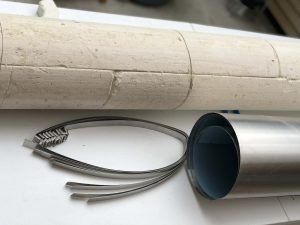
The installation techniques for cryogenic and thermal insulation differ due to the differences in the materials and applications.
Cryogenic insulation is typically installed as a multi-layer system to achieve maximum performance in extremely low-temperature environments. The installation process involves wrapping the pipes with a vapor barrier to prevent water vapor from reaching the insulation, followed by the application of multiple layers of insulation material. The insulation layers are typically vacuum-sealed or coated with a vapor barrier to further prevent water vapor ingress.
Thermal insulation, on the other hand, is installed to reduce heat transfer and maintain the temperature of the fluid being transported within the pipe. The most common installation technique for thermal insulation is to wrap the pipe with a layer of insulation material and secure it with mechanical fasteners or adhesive tape. The thickness of the insulation layer is determined by the required thermal resistance, which is dependent on the temperature of the fluid being transported and the environmental conditions surrounding the pipe.
In both cases, it is important to ensure that the insulation is properly installed and sealed to prevent air or moisture infiltration, which can compromise the performance of the insulation.

How Does Insulation Work?
In a chemical processing plant, a pipeline carrying a hot chemical solution is routed through an area where the ambient temperature is significantly cooler. Without insulation, the pipeline would lose heat to the surrounding environment, leading to a decrease in the temperature of the chemical solution. This would affect the chemical process being carried out and could cause delays or even failure to the entire process.
To prevent this, the pipeline is insulated with a thermal insulation material, which reduces the rate of heat loss. The insulation material helps maintain the temperature of the chemical solution by reducing the amount of heat that is transferred to the environment. This ensures that the chemical process can be carried out at the correct temperature and helps prevent any delays or failures.
Why is it important?
Industrial pipe insulation is important for several reasons, including:
- Energy efficiency: Insulation helps prevent heat loss or gain from pipes, which can significantly reduce energy consumption and costs. By keeping the contents of the pipe at the desired temperature, less energy is required to maintain that temperature.
- Process control: Insulation can help maintain consistent temperatures, preventing temperature fluctuations that can affect the quality or integrity of the material being transported through the pipes. This is especially important in industries where precise temperatures are critical, such as the food and beverage, pharmaceutical, and chemical industries.
- Safety: Insulation can help prevent burns or other injuries that may occur when handling hot pipes or coming into contact with cold pipes. It can also help prevent condensation and corrosion, which can lead to structural damage or accidents.
Insulation benefits
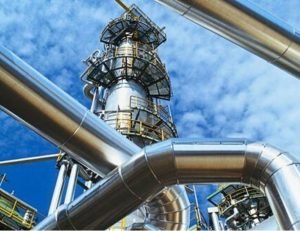
- Energy savings: Insulated pipes can reduce heat loss and save energy by minimizing heat transfer to the environment, which reduces energy costs.
- Increased efficiency: Insulated pipes increase the efficiency of heating, ventilation, and air conditioning systems by minimizing heat loss, which reduces the amount of energy required to maintain a specific temperature.
- Process control: Insulation helps maintain the temperature of the process media, preventing temperature variations and allowing for more accurate and consistent process control.
- Reduced condensation: Insulation can help reduce or eliminate condensation on cold pipes, which can cause corrosion, mold growth, and other problems.
- Reduced noise: Insulated pipes can help reduce the noise level from fluid flow, which can create a more comfortable and safer working environment.
- Enhanced safety: Insulation can reduce the surface temperature of hot pipes, which reduces the risk of burns and other injuries.
- Longer equipment life: Insulation can protect pipes and equipment from temperature variations and reduce the risk of damage, prolonging the lifespan of the equipment.
- Reduced carbon footprint: Insulated pipes reduce energy consumption, which can lead to a reduction in carbon emissions and a smaller carbon footprint.
- Improved indoor air quality: Insulation can help prevent the growth of mold and other harmful organisms by reducing the amount of condensation on pipes, leading to improved indoor air quality.
- Compliance with regulations: Insulation is often required to comply with regulations related to energy efficiency, safety, and environmental protection.
Conclusion
Industrial insulation is an essential component of many industrial processes, with a range of benefits that include cost savings, increased energy efficiency, and improved safety. There are three main types of insulation: cellular, fibrous, and granular, which can come in a variety of forms such as rigid boards, flexible sheets, or foams. Cryogenic and thermal insulation are two specific types that are commonly used in industrial settings. Proper installation techniques are crucial to ensure maximum insulation performance, and basic safety practices are important to observe when working with insulation materials. Overall, understanding the fundamentals of industrial insulation is essential for anyone working in industrial settings to ensure the safety, efficiency, and effectiveness of industrial processes
Other Topics: References

Spanish Version: Introducción a la industria del aislamiento
I. Introducción a la industria del aislamiento
II. Diferentes tipos de aislamiento industrial Aislamiento
- Mecánico Aislamiento
- Criogénico Aislamiento
- Aislamiento Térmico
III. Tipos de Aislamiento
- Celular Aislamiento
- Fibroso Aislamiento
- Granular Aislamiento
IV. Formas de aislamiento
V. Diferencia entre materiales aislantes calientes y fríos
VI. ¿Cómo funciona el aislamiento? ¿Por qué es importante?
VII. Beneficios del aislamiento

- Introducción a la industria del aislamiento
El aislamiento industrial es un material térmico utilizado para tuberías y equipos de alta y baja temperatura, más comúnmente utilizado en petroquímicos, refinerías de petróleo, plantas de energía, fábricas de papel y tipos similares de fabricación. En esta lección, discutiremos todo al respecto, los beneficios y otras cosas que la mayoría de los aisladores no conocen.
Los arquitectos, ingenieros, especificadores y contratistas de aislamiento de edificios generales o comerciales necesitan información confiable y accesible sobre productos de aislamiento. Considere este su recurso de referencia para obtener datos completos sobre aislamiento comercial, para que pueda tomar decisiones informadas en el trabajo.
Esta lección le dará una visión general de la industria del aislamiento, incluyendo cómo y por qué se usa el aislamiento y los factores de seguridad relacionados con el aislamiento.
- Diferentes tipos de aislamiento industrial

¿Cuál es la diferencia entre Criogénico? Aislamiento y Aislamiento Térmico?
Criogénico – aislamiento criogénico se utiliza principalmente en unidades de proceso de licuefacción de gases, siempre que implica gama muy baja temperatura (15 centígrados a -75 grados Celsius) y presión elevadas. Además del riesgo de que se forme agua y hielo a esta temperatura criogénica. Las refinerías utilizan aluminio y acero inoxidable para la sección fría de la planta para evitar problemas de fragilidad encontrados con el acero al carbono en tuberías y tanques. Los aislamientos en frío como vidrio celular / vidrio de espuma, poliuretano y criogel se utilizan principalmente para sistemas de frío. El trabajo en frío es un problema importante de diseño en instalaciones de baja temperatura: penetración de humedad y eficiencia operativa.
El aislamiento térmico es la forma de reducir la transmisión de calor entre objetos en contacto térmico. Este tipo de aislamiento consiste en materiales de baja conductividad térmica mezclados para llevar a cabo un sistema de electricidad térmica aún más bajo. Además, se puede lograr con procesos diseñados específicamente, así como con formas y materiales de objetos adecuados.
¿Qué es el aislamiento?

Un aislante es cualquier material que impida la entrada de electricidad, calor o sonido, comenzando con un territorio y luego al siguiente. A continuación, analizaremos cómo funciona cada uno de estos tipos de aislamientos y para qué se utilizan en nuestras vidas.
- Aislamiento Mecánico
- Criogénico Aislamiento
- Térmico Aislamiento : es la razón por la cual las tuberías y tanques en la planta permanecen libres de corrosión, protegen las superficies calientes del personal y ahorran energía para operar el sistema de proceso a bajo costo. sustancias o materiales utilizados, que tienen muy baja conductividad térmica. Controla el movimiento del calor de un lugar a otro. La fibra de vidrio, lana, lana de roca, poliuretano, Materiales como estos son muy malos conductores de calor y, por lo tanto, buenos aislamientos térmicos.
- Tipos de aislamiento

Generalmente, los materiales de aislamiento se dividen en tres (3) tipos principales:
- Aislamiento celular : es un material de aislamiento compuesto por pequeñas células individuales aisladas entre sí. El material celular puede ser vidrio o plástico, como poliuretano, poliestireno, polisocianurato o elastómero.
- Aislamiento fibroso : es un material aislante compuesto de fibras de pequeño ancho que separan finamente el espacio de aire. Se utilizan sílice, lana de escoria, lana de roca y fibras de sílice de alúmina. Los aislamientos ampliamente utilizados de este tipo son lana mineral y fibra de vidrio. Los productos de lana mineral y fibra de vidrio generalmente tienen sus fibras unidas entre sí con aglutinantes orgánicos que suministran la integridad estructural limitada de los productos.
- Aislamiento granular : es un material de aislamiento compuesto de pequeños nódulos que contienen espacios huecos. Este tipo de material de aislamiento se puede producir como un material suelto, o combinarse con un aglutinante y fibras para hacer un aislamiento rígido. El material utilizado puede ser tierra de diatomeas, silicato de calcio, vermiculita extendida, celulosa, perlita o protecciones microporosas.
- Formularios de Aislamiento
Los aislamientos se realizan en una variedad de formas adecuadas para funciones y aplicaciones específicas. La estructura consolidada y el tipo de aislamiento deciden su técnica adecuada para la instalación. Las formas más utilizadas son:
- tableros rígidos/Para Tanques, láminas, bloques y formas preformadas como segmentos curvos, aislamiento de tuberías, revestimiento, etc. Los aislamientos celulares, fibrosos y granulares se hacen en estas formas.
- Formas preformadas/Para Pipa y láminas flexibles. Aislamientos fibrosos y celulares se hacen en estas formas.
- Cementos/Para Boiler (tanto en aislamiento como en acabado). Hechos de aislamientos y cementos granulares y fibrosos, pueden ser de tipo secado al aire o de configuración hidráulica.
- Espumas/Para Caja frías Se utiliza espuma o espumas para rellenar áreas irregulares y vacías.
- Mantas flexibles/ for valves Los aislamientos fibrosos se hacen en mantas flexibles.
- Diferencia entre materiales de aislamiento en frío y en caliente
Cuando se trata de aislamiento industrial entre trabajar con sistemas de frío crónico y sistemas de proceso térmico en caliente, es el procedimiento para instalar el aislamiento. Si bien es un método escalonado más fácil para cubrir tuberías calientes y tanques. El aislamiento de tuberías criogénicas requiere tres veces más proceso de instalación, instalación por capa, barrera de vapor en todas las costuras, vapor que impide que todas las capas se unan, y cada capa en posición escalonada. La cubierta de metal alrededor del aislamiento debe estar orientada al detalle a prueba de agua en todos los ángulos, recortes y engreídos en cada costura para evitar la entrada de agua y el sistema hermético al vapor de agua.
- Materiales de aislamiento en caliente El aislamiento

Removible está diseñado específicamente para aislar los sistemas de tuberías que transportan gases y sustancias a altas temperaturas. A continuación se presentan 3 materiales comunes utilizados en circunstancias que requieren aislamiento en caliente:
- RockWool adherido con resina: se utiliza tanto en aislamiento en frío como en caliente, tiene una resistencia química, térmica y térmica elevada con una estabilidad dimensional inigualable.
- Cray Flex: este material presenta una alta resistencia térmica, térmica y química, mientras que todavía se produce a partir de materias primas de alta calidad.
- Fibra de vidrio en espiral: este tipo de fibra de vidrio es difícil de instalar pero extremadamente económico para sus necesidades de aislamiento en caliente. Ambos mantienen el contenido que se transporta a la temperatura correcta al tiempo que garantiza que el calor excedente permanezca dentro del sistema de tuberías.
Recuerde que comprender la temperatura máxima que cubrirá el aislamiento es la parte más importante para elegir un material de aislamiento caliente.
- Materiales de aislamiento en frío
Al igual que los materiales de aislamiento en caliente, una parte de los materiales utilizados para suministrar aislamiento en frío difieren en el sistema de tuberías que están aislando. En este sentido, los materiales utilizados en la protección contra el frío o el calor están sujetos a la personalización del sistema de tuberías específico. Hay dos materiales comunes utilizados en el aislamiento en frío: Mantener el frío adentro es tan importante como mantener el calor afuera en el aislamiento refrigerado. Hay muchos tipos de aislamiento utilizados en las tuberías de agua refrigerada. Los dos más populares son el aislamiento de goma y el vidrio de espuma.
- Espuma de poliuretano: perfecta para cuidar la baja conductividad térmica y las sustancias con temperaturas inferiores a las frías. La espuma de poliuretano también tiene en cuenta la baja emanación de humo y la baja permeabilidad al vapor de agua.
- Espuma de goma: también se sugiere regularmente para el control de la acumulación, ya que la innovación de celda cerrada es altamente resistente al vapor de humedad.
¿Cuál es la diferencia?
La diferencia entre el material de aislamiento frío y caliente es la siguiente: Primero, el material utilizado en el aislamiento caliente no requiere una barrera de vapor de agua como en el aislamiento frío para que funcione correctamente. Esta barrera ayuda a prevenir la degradación del metal que puede ocurrir en cualquier momento.
Las acumulaciones de condensación ocurren dentro de los sistemas fríos, que requieren un aislamiento flexible o flexible para tratar este problema. Por lo tanto, los tipos de espuma, metal, fibra de vidrio y otros materiales utilizados para el puente térmico en el aislamiento en frío son más flexibles y se forman que los que se encuentran en los materiales de aislamiento en caliente.
Finalmente, se requiere una estructura de celda cerrada en el aislamiento frío para ayudar a evitar la absorción. El material en aislamiento de alta temperatura si permite que el agua ingrese al calor provocará la evaporación de la humedad. Pero el agua no se evapora en un aislamiento frío dispositivo de. La estructura de celda cerrada del material de aislamiento en frío ayuda a prevenir este problema.
- ¿Cómo funciona el aislamiento? ¿Por qué es importante?

¿Cómo funciona el aislamiento?
El aislamiento de la tubería juega un papel importante para la seguridad, donde las temperaturas de la tubería pueden variar de 0 ° F a 1000 ° F (-18 ° C a 538 ° C) en hierro, cobre y PVC. El calor normalmente fluye de los territorios más cálidos a los más fríos. Durante todo el invierno, el calor se mueve legítimamente desde espacios cálidos (por ejemplo, su hogar) hacia áreas exteriores y sin calefacción. A lo largo de los últimos meses de la primavera, el calor se mueve desde el exterior cálido hasta el interior fresco de su hogar.
El aislamiento funciona al reducir el movimiento del calor de un espacio caliente a un espacio más frío. El aislamiento ayuda a aumentar el dominio de la vitalidad de su hogar al contener el calor y mantener el hogar cálido y evitar que se caliente excesivamente en los meses de mitad de año.
Cuando se introduce adecuadamente, el aislamiento puede aumentar los niveles de consuelo de su hogar al mantener una temperatura estable y uniforme de una habitación a otra. El aislamiento también desarrollará el dominio de la vitalidad de su hogar, reduciendo por completo las facturas de calentamiento y enfriamiento.
Es muy importante seguir y cumplir con los estándares de la industria para obtener los mejores resultados en conservación de energía, control de condensación y rendimiento.
¿Por qué es importante?
El aislamiento adecuado de las tuberías es una de las facetas esenciales de cualquier infraestructura, no solo porque el aislamiento aumenta el rendimiento y la vida útil de sus tuberías, sino que también las protege contra daños causados por las temperaturas extremas o el clima.
Beneficios del aislamiento

- Seguridad y protección del personal
- Mejora el proceso y el rendimiento
- Evita la condensación de humedad
- Reduce el nivel de ruido
- Reduce el costo de la energía
- Protección contra incendios
- Mejora la apariencia
- Reduce la capacidad y el tamaño de los nuevos equipos mecánicos
El aislamiento proporciona un ambiente de trabajo más saludable. El control de ruido, ya sea en una instalación interior o exterior, puede aumentar la productividad, mejorar la calidad del aire y mantener el sistema de aislamiento puede proporcionar beneficios a corto y largo plazo que superen las expectativas.
El aislamiento mecánico ayuda a garantizar la máxima eficiencia para proteger al personal, el equipo y el sistema. Proteger a los trabajadores del contacto con superficies calientes o frías. Los sistemas de aislamiento son necesarios para mantener la temperatura de la superficie de un sistema de proceso por encima de la temperatura del punto de rocío del aire ambiente. La condensación es un problema del mundo real que, si no se corrige, puede conducir a otros problemas graves. Si está diseñado, instalado y mantenido adecuadamente, el aislamiento puede minimizar el daño por condensación, incluido el daño a las superficies y equipos circundantes; crecimiento de moho, que afecta la calidad del aire interior; y corrosión bajo aislamiento.
- Otros temas
- Referencias
- Cuadrante Tienda
- Osha.com
- Insulation.Org
- Insulation Institute
- Thermal-Engineering.Org Elgrados Celsius a -75 grados Celsius
